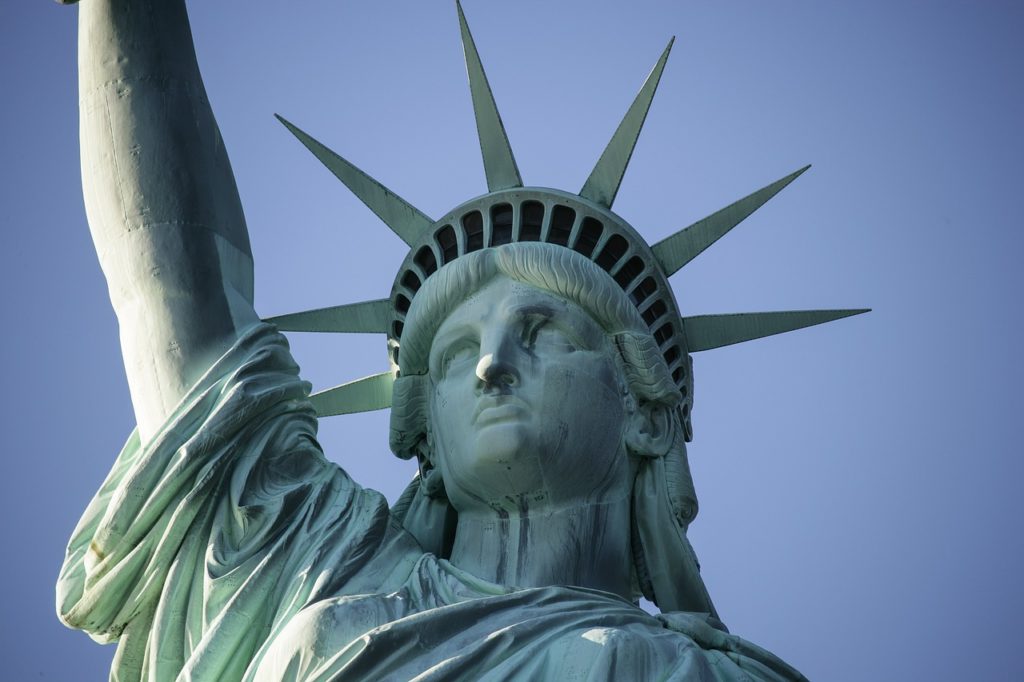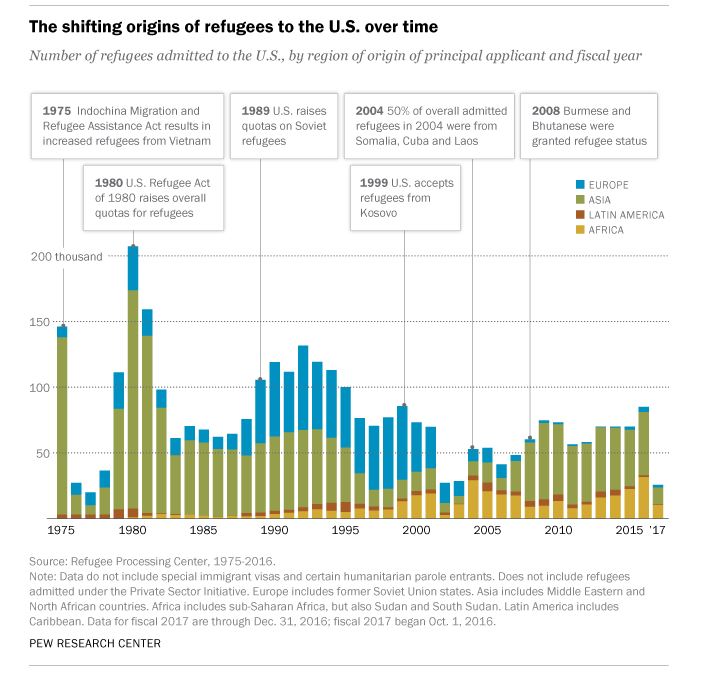Each of us wishes to talk about hot-button issues in a thoughtful, calm manner with that friend, colleague, or relative who has a totally different perspective: leading with facts rather than emotions. One of the best ways to have a great policy conversation is to arm yourself with knowledge beforehand. Having the facts at your fingertips helps give you the confidence to make your voice heard while remaining calm and composed.
There is much confusion and controversy over President Trump’s new executive order to ban immigration for 90 days from Iran, Iraq, Libya, Somalia, Sudan, Syria, or Yemen. Rereading The Policy Circle’s brief on Immigration will allow you to review aspects of the larger immigration debate in our country and decide which lenses are most important for you as you evaluate your position on the Executive Order, and the issues of legal vs illegal immigration. Do you use a security, economic, or humanitarian lens? — or a combination?
Immigration By The Numbers
- The United States awards over 1 million green cards (permanent U.S. resident on the path to citizenship) and over 500,000 temporary immigration visas each year.
- The U.S. resettles over 70,000 refugees each year.
- More than 4.4 million people are on the legal immigrant visa waiting list to gain a visa to enter the United States. 98% have been sponsored by a family member in the U.S.
- Approximately 11.3 million illegal immigrants reside in the United States; the number peaked in 2007 at 12.2 million, 4% of the U.S. population (Pew Research).
The Pew Research Center’s most recent report “Key Facts About Refugees to the U.S.” notes that this is not the first time refugee resettlement has been stopped; rather, “historically, the total number of refugees coming to the U.S. has fluctuated along with global events and U.S. priorities.” See the chart below for a visual representation of these changing numbers over the last several decades.
The Executive Order
The Atlantic’s “What Trump’s Executive Order on Immigration Does — and Doesn’t Do” provides a balanced, “just the facts, ma’am” rundown of President Trump’s new executive order, noting there has been both criticism and praise for this order. Policymakers and the American people are divided on both the content of the order and its implementation. Some claim the order is unconstitutional (Politico), while others point out its popularity as evidenced in new polling (Weekly Standard).
As noted in The Policy Circle Immigration Brief nearly everyone agrees that our current immigration system needs to be reformed, but just what that reform looks like has not yet found a consensus. Most citizens agree that:
- We need to know who is in our country. Laws currently on the books need to be enforced, this includes securing the border and monitoring that individuals do not overstay their visa.
- We must respect the rule of law. If we as citizens do not respect our nation’s laws enough to enforce those we have on the books, we cannot expect anyone else to respect them. This includes enforcing affidavits of support and refusing to hire illegal immigrants.
- We need immigration at the right levels. Levels of immigration must account for U.S. market labor needs, compassionately make allowances for those seeking a better life, and protect current American workers from being undercut.
Security concerns
The Constitution states that government’s primary function is to provide for the safety of its citizens’ security, with many citizens and policy makers viewing a thorough vetting process as a high priority. American people would then feel confident in our ability to accept refugees without exposing citizens to additional security risks. The challenge for US officials is how to clear individuals from war-torn countries if there are few criminal or terrorist databases to check, or if we have don’t have people on the ground in those countries, as is the case for many of the countries recently placed on the temporary immigration ban list.
Economic concerns
When viewing the new order through an economic lens, there are concerns that restricting immigration will affect industries that rely on immigrant workers or may spark a “brain drain” that will have a negative impact on U.S. economy and businesses, or on the medical or scientific professions, (Scientific American).
History of the Visa-Waiver program
WH Press Secretary Sean Spicer stated in an ABC News interview that the seven countries designated in the new order were chosen by the Obama administration. As The Atlantic writes, the executive order “has its roots in the visa-waiver program. The U.S. allows the citizens of more than 30 countries to visit for short stays without a visa under this program. But that visa waiver does not apply if a citizen of an eligible country has visited—with some exceptions—Iran, Iraq, Libya, Somalia, Sudan, Syria, or Yemen on or after March 1, 2011.” These measures were put in place by the Obama administration.
Watch George Washington University law professor Jonathan Turley and former Acting Solicitor General Neil Katyal debate the legal arguments for and against the new executive order below on this PBS New Hour clip:
The Executive Order, currently being debated in the courts, calls for the immigration ban from the seven countries to be in effect for 90 days and for U.S. refugee admissions to be suspended for 120 days. What will be the humanitarian, national security, and economic impacts?
It’s a movement!
Recommend a Circle Leader. Especially in Nebraska, Wisconsin, Minnesota and Missouri where circles are sprouting.
Start a Circle in your neighborhood. Add value in your community by giving women the facts and the space to strengthen their understanding of the issues.
Invest in The Policy Circle. Together let’s build a network of women who want to assume their civic duties and understand the impact of policy in their lives.
The Policy Circle is a 501(c)3 that provides a fact-based, nonpartisan framework that inspires women living in the same community to connect, learn about and discuss public policies that impact their lives. Women across the nation are taking a leadership role in public policy dialogue on what human creativity can accomplish in a free market economy.

